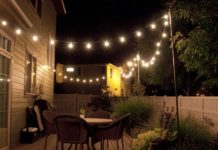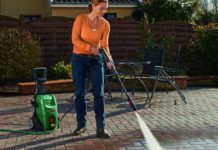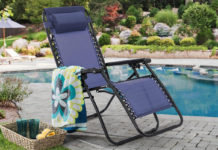Pest infestation in a blooming, lovely garden is every gardener’s nightmare. Imagine how those pests could ruin your hard work, affect your harvest and damage and eventually kill your precious flowers and crops. For this reason, learn some great ways on how to keep your garden pest-free. A few tips are in the following.
Create Barriers
One of the best ways to keep a pest-free garden is to clean and keep clutter-free garden sheds that won’t be an inviting place for pests, including cockroaches and bugs. You should also consider fencing around the garden to prevent deer, pets and other larger animals from wrecking your hard work.

Another natural solution is to use row covers to keep the bugs from infesting your garden rows. You might also want to use PVC or wire hoops covered with cloth and around a few plants, especially specific ones and seedlings that are a favorite among pests.
Plant collars are also valuable particularly if you’re challenged by cutworms. These collars are made with a carton or cardboard placed around a plant’s base to deter pests from feeding at the bottom of it.
Netting is also a good option especially if you plant berries. Using this method, you can avoid losing a harvest due to birds that feed on them.
Crop Rotation
Minimize infestation, keep it pest-free and crop disease through crop rotation. For example, moving the location where you’re growing potatoes around annually will help in breaking the cycle of pests.
In addition, it can help you achieve soil nutrient and fertilizer balance. For example, certain fruit crops may thrive better in places where there are high co ncentrations of phosphorus, potassium, and nitrogen.
Another example of the crop rotation system is by planting legumes, such as beans this year and then leaf flower vegetables, such as broccoli next year. In the following year, you can plant beetroot, carrots or onions. Finally, you can leave the always-planted area fallow for one year in order to rest the soil, a method used by some organic farmers.
Choose suitable plants for your location
IN your home garden planner, you must know suitable plants that can work well for your location, stick with that, and avoid being distracted by all the seed at the nursery.

So for example, if you’re living in Ohio, learn about the native trees and plants for your area and choose them. Another thing is that you might want to consider plants that can attract good bugs, such as green lacewings, ladybugs, and dragonflies. However, some plants attract bad bugs. So in all cases, you should know what grows well in your location or consider speaking with lawn care expects in your area.
You should also consider symbiotic plants that can repel pests and attract good ones to eat bad pests. A few examples include garlic and onion plants. They are easy to grow and can serve as natural pest deterrents. Some plants, including daisies, marigolds, and nasturtiums can also protect your garden.
Keep the pests away
If you want to stop pest infestation, keep them away with some preventive measures. For one, you must avoid conditions to invite pests into your garden. To start, here are some tips.
- You should water your plants in the morning for its benefits, including hydrating the plants well before the hottest times of the day. They will also prevent stress and wilting. And by being healthy, they’ll look less appealing to insects that feed on sick and stressed plants. Watering in the morning also gives the leaves the time to dry off before the night bites. Or else, damp plants, especially tightly packed ones, will be inviting for pests, such as earwigs, snails, and slugs.
- Consider spacing to give plants a room to breathe. Do not try to squeeze in as many plants in a space because it will just lead to some problems in the end. For one, a tightly packed garden while giving a sense of abundance also attracts feeding insects that enjoy cover from predators and shelter from the heat. Raised garden beds or kits helps you keep some pests away, giving you better chances of monitoring the pest infestation.
- Welcome birds, frogs, and toads to your garden because they feed on insects. The very basic thing to do is to invite birds is with a bowl of water. You might also want to set up a toad house for frogs and toads that commonly only carve out a small soil depression and then wait for dinner.
- Spray pesticides: when the situation gets to worst, whether on your garden or lawn, you can use organic pesticides to control the pests. You just need to get yourself a good backpack sprayer to keep your garden pest-free.
But if you notice pest infestation in your garden, you should consider hiring an expert pest control. The pros have the knowledge, skills, and experience in dealing and eradicating different types of pests through natural and/or chemical solutions. They can also devise an effective plan on how to eliminate pests and execute it at the right places and timings.
With professional help and some of the tips above, you can keep pests out of your garden for good.













![Best Crochet Hooks for Beginners and Pros [2020 Update] best crochet books](https://www.awebtoknow.com/wp-content/uploads/2018/01/best-crochet-books-100x70.jpg)


